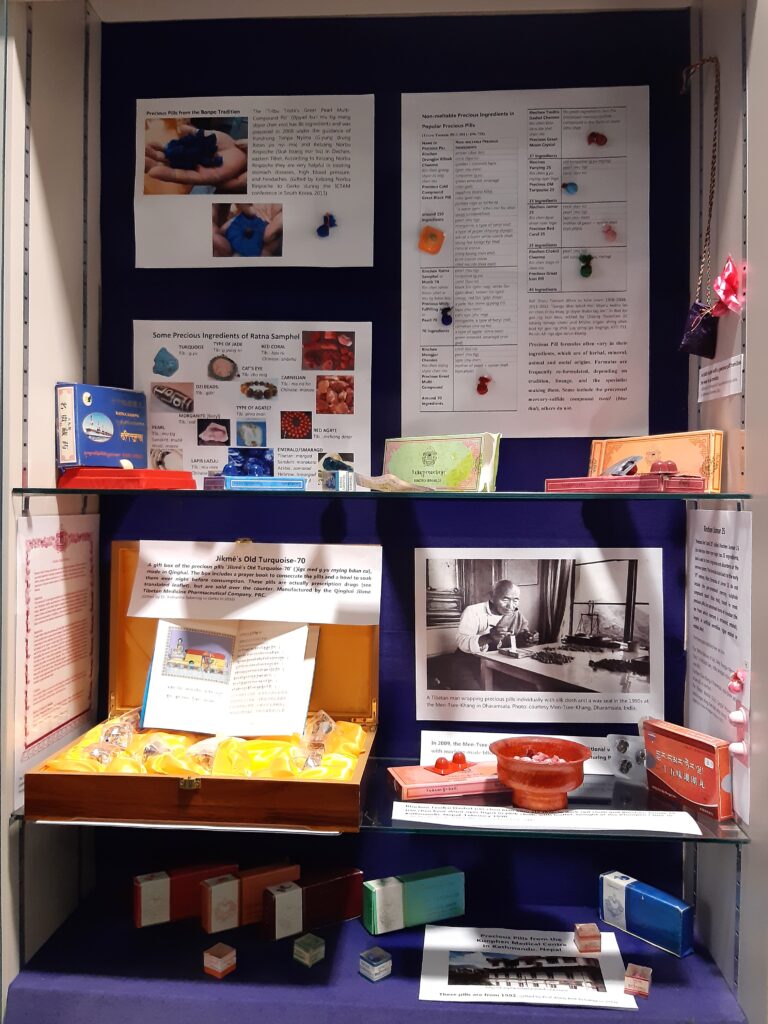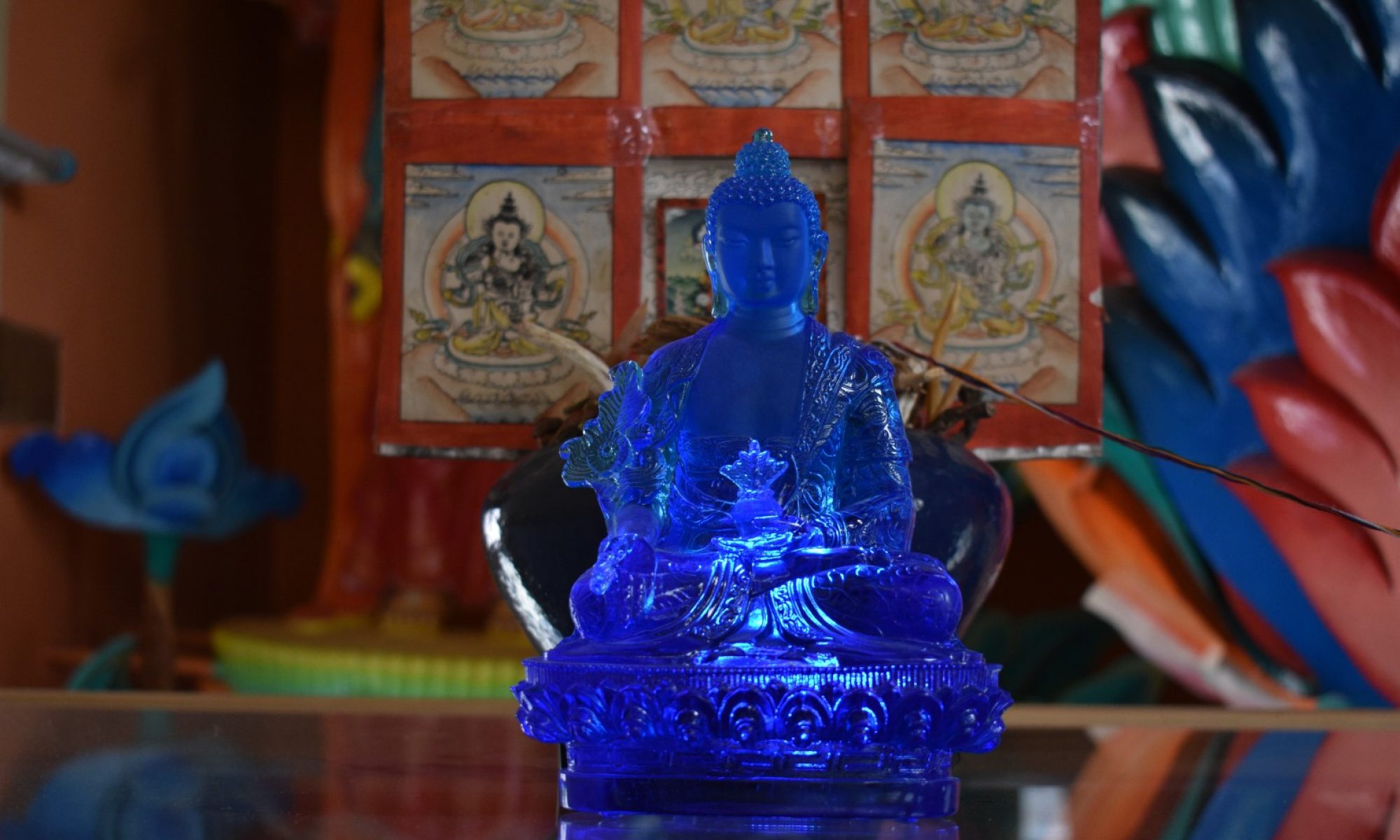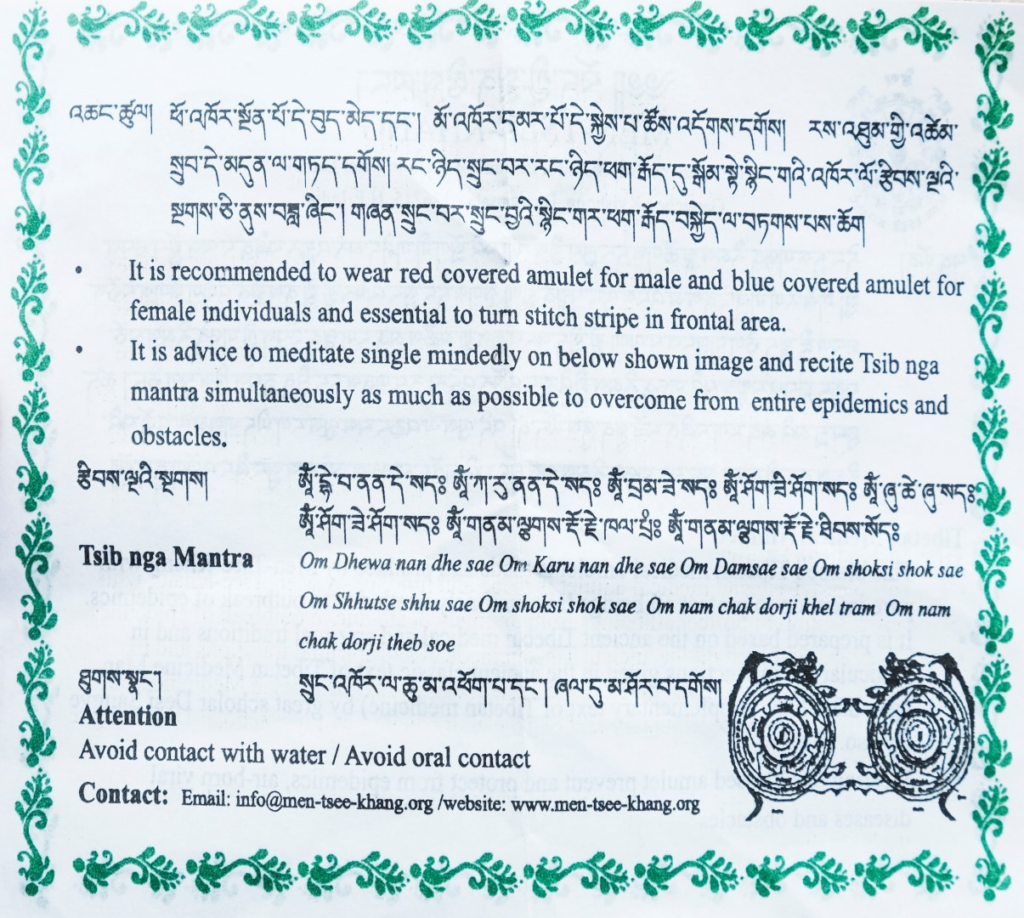By Jan van der Valk and Barbara Gerke
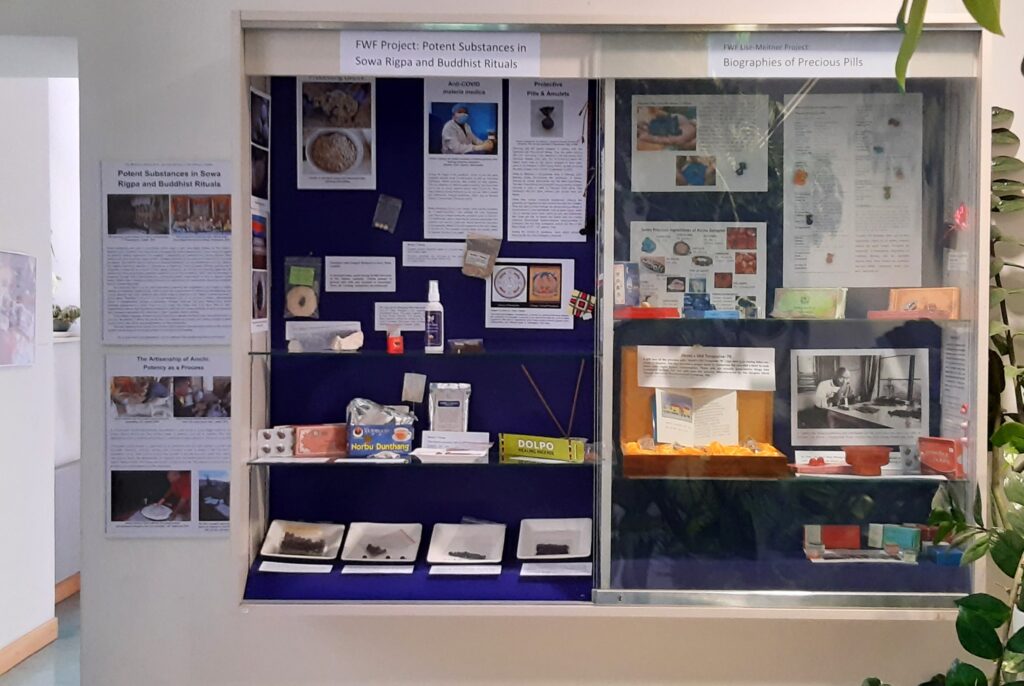
On December 15, 2022, Barbara added the finishing touch to our small yet dense exhibition in the hallway of ISTB. Only a few steps away from our office, this expo shares some of our on-going work on how potent substances become medicine (section 1), while also focusing on the pharmaceutical responses to the COVID-19 pandemic of Sowa Rigpa physicians in the Himalayan valleys of Ladakh and Kathmandu (section 2). The expo therefore consists of two parts, of which we reproduce the introductory paragraphs here, together with some photos of the key objects we exhibited. In this blogpost we introduce section 2. You can find our separate blog entry on section 1 here.
University of Vienna students can visit the exhibition during office hours. Others who are interested, feel free to contact us for a guided mini tour!
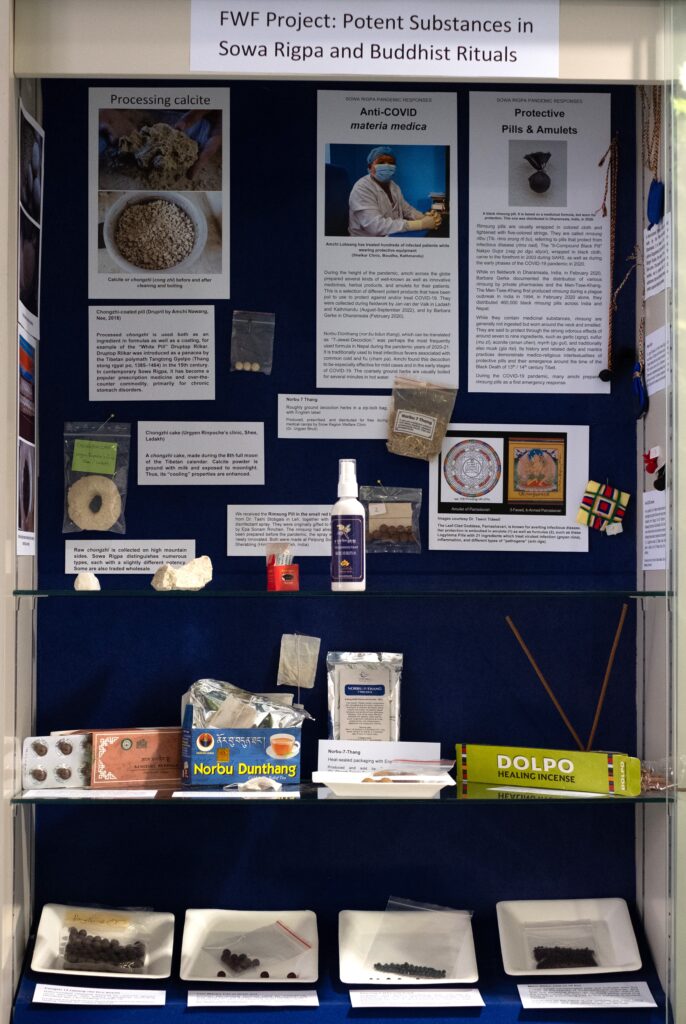
Anti-COVID materia medica
During the height of the pandemic, amchi across the globe prepared several kinds of well-known as well as innovative medicines, herbal products, and amulets for their patients. This is a selection of different of potent products that have been put to use to protect against and/or treat COVID-19. They were collected during fieldwork by Jan in Ladakh and Kathmandu (August-September 2022), and by Barbara in Dharamsala (February 2020).
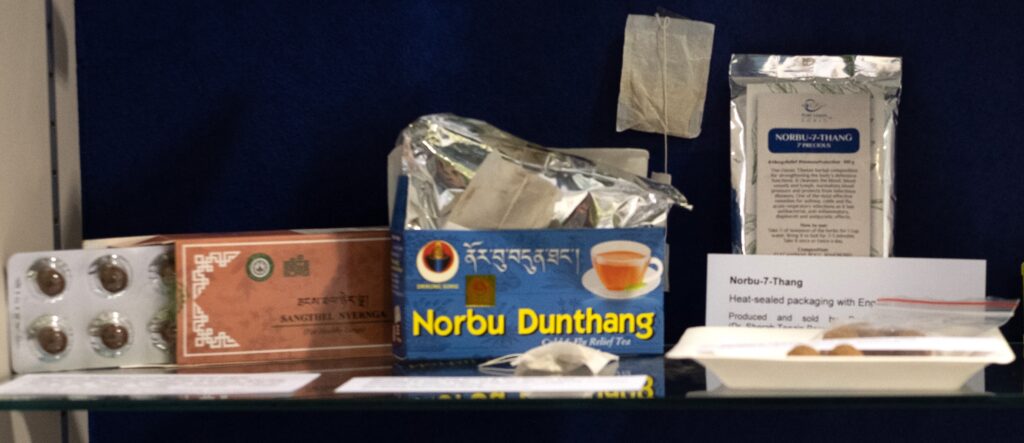
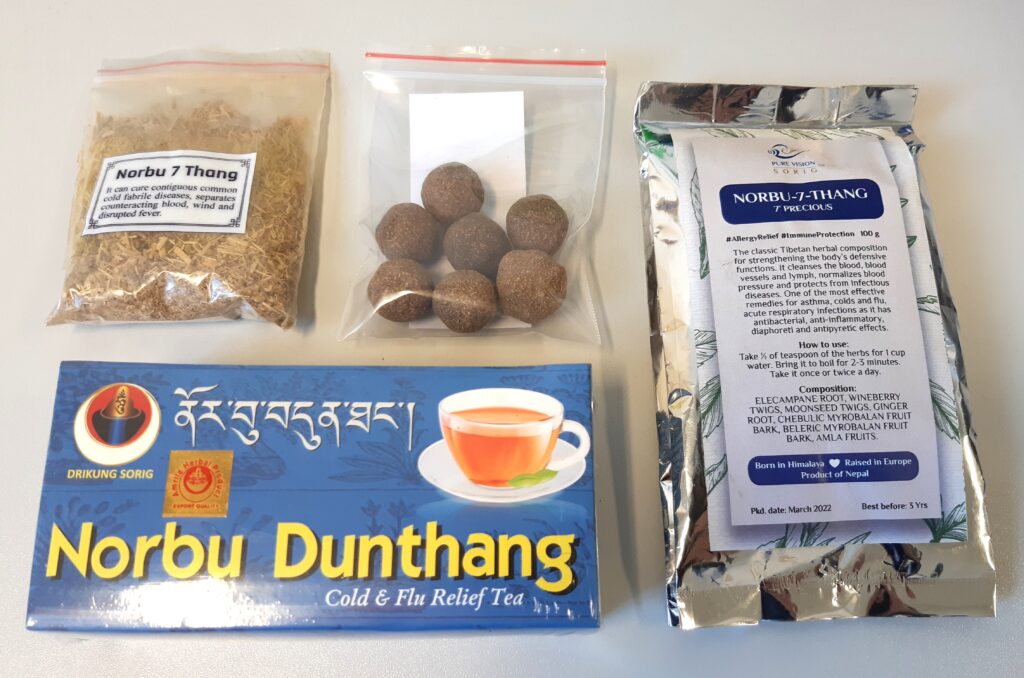
Norbu Dünthang (nor bu bdun thang), which can be translated as “7-Jewel-Decoction,” was perhaps the most frequently used formula in Nepal during the pandemic years of 2020-21. It is traditionally used to treat infectious fevers associated with common cold and flu (cham pa) in particular. Amchi found this decoction to be especially effective for mild cases and in the early stages of COVID-19. The coarsely ground herbs are usually boiled for several minutes in hot water.

Here are three formulas used to treat later stages of COVID-19 (from left to right): (1) Pangtsi 12, (2) Tazi Marpo, and (3) Khyung 5. The fourth is a sample of Mani Rilbu, which are believed to protect from infection when ingested. These were collected by Jan in Kathmandu in August/September 2022.
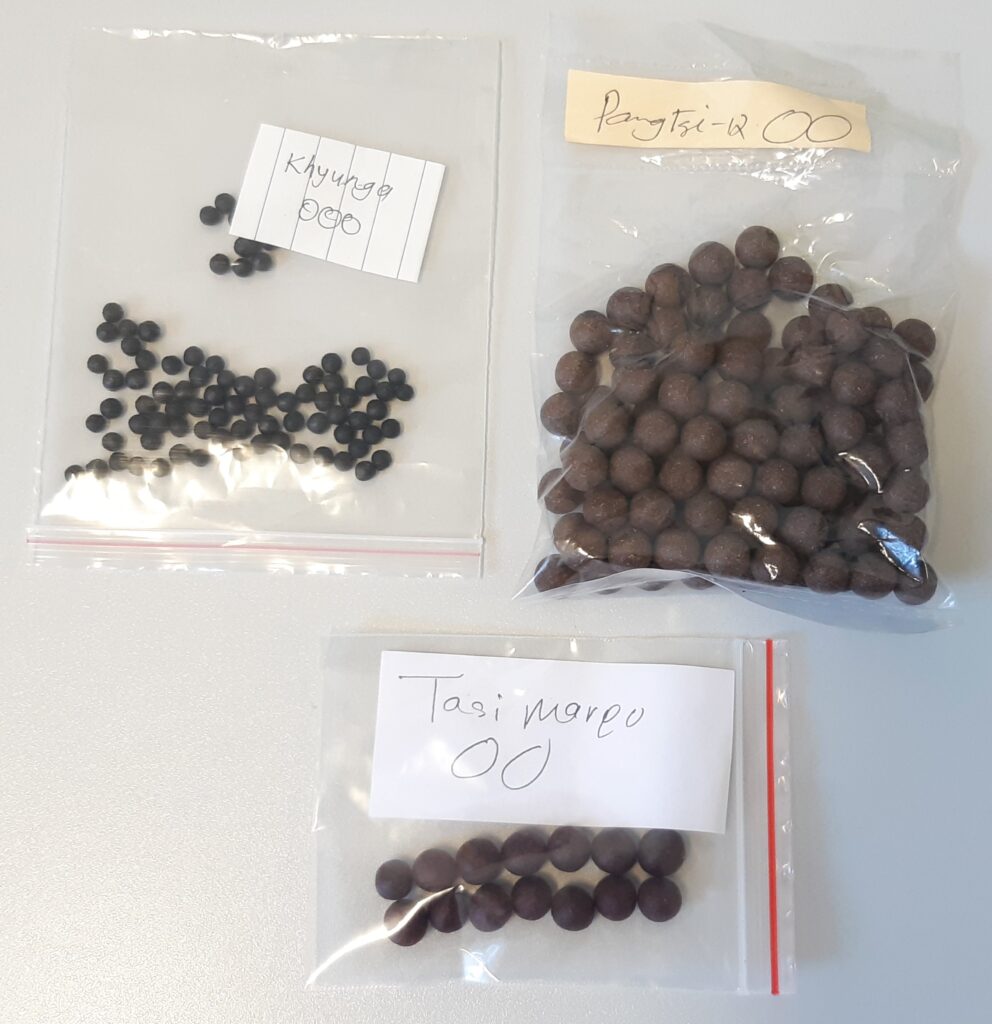
(1) Pangtsi 12 (spang rtsi bcu gnyis)
Reformulated classical formula for nyenrim (gnyen rims) disorders, with newly added ingredients (including Rhodiola spp.) for treating COVID-19.
Produced and distributed to Sowa Rigpa clinics by Bendurya Healing Herbals (Dr. Lhakpa Ngodup)
(2) Tazi Marpo (rta zi dmar po)
Another top-ranking formula used for COVID-19. This “Red Tazi” pill is often related to Hayagrīva, and is believed to carry his blessing when consecrated.
Produced and prescribed by Yuthok Himalayan Clinic (Dr. Ngawang Choekyong)
(3) Khyung 5 (khyung lnga)
Together with Norbu Dünthang, this “Gāruḍa 5” formula was one of the most commonly used medicines for COVID-19. Khyung 5 was also used preventatively for a short period in case of high exposure.
Distributed for free during medical camps and prescribed by Snow Region Welfare Clinic (Dr. Urgyen Bhuti)
(4) Mani Rilbu (ma ni ril bu)
These small consecrated pills are imbued with the power of thousands of Avalokiteśvara mantras, and with the personal blessings or jinlap (byin rlabs) of the Dalai Lama. Dr. Tsémé ingested some once in a while while dispensing pills to sick patients to protect herself.
Distributed by the Office of His Holiness the Dalai Lama (Dharamsala), and then gifted to Dr. Tseme (Shelchoe Yuthok Clinic), who gave some to Jan.
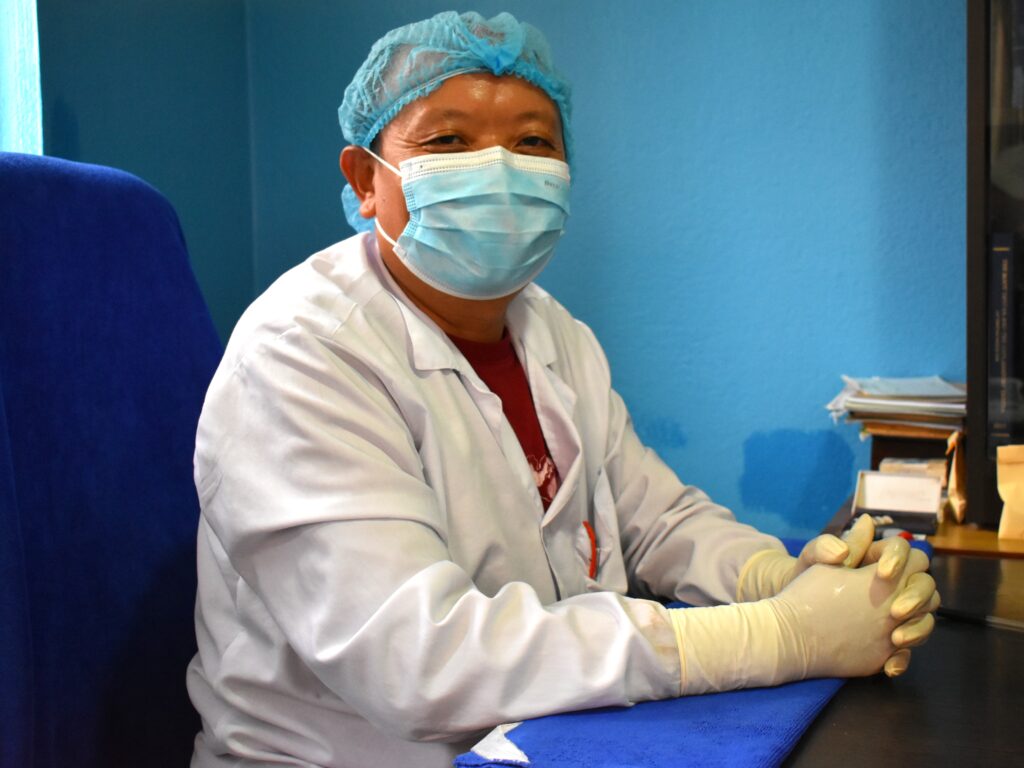
Protective pills
Rimsung pills are usually wrapped in colored cloth and tightened with five-colored strings. They are called rimsung rilbu (rims srung ril bu), referring to pills that protect from infectious disease (rims nad). The 9-compound pill Nakpo Gujor (nag po dgu sbyor), wrapped in black cloth, is one of the many rimsung that came to the forefront in 2003 during SARS as well as during the early phases of the COVID-19 pandemic in 2020.
While on fieldwork in Dharamsala, India, in February 2020, Barbara documented the distribution of various rimsung by private pharmacies and the Men-Tsee-Khang. The Men-Tsee-Khang first produced rimsung during a plague outbreak in India in 1994; in February 2020 alone, they distributed 460,000 black rimsung pills across India and Nepal. Rimsung can be worn as amulets and smelled for protection.
While they contain medicinal substances, they are generally not ingested but worn around the neck. They are said to protect through the strong odorous effects of around seven to nine ingredients, such as garlic (sgog pa), sulfur (mu zi), black aconite (sman chen), types of myrrh (gu gul), and traditionally also musk (gla rtsi). Its history and related deity and mantra practices demonstrate medico-religious intertextualities of protective pills and their emergence around the time of the Black Death of 13th / 14th century Tibet.
During the COVID-19 pandemic, many amchi prepared rimsung pills as a first emergency response.
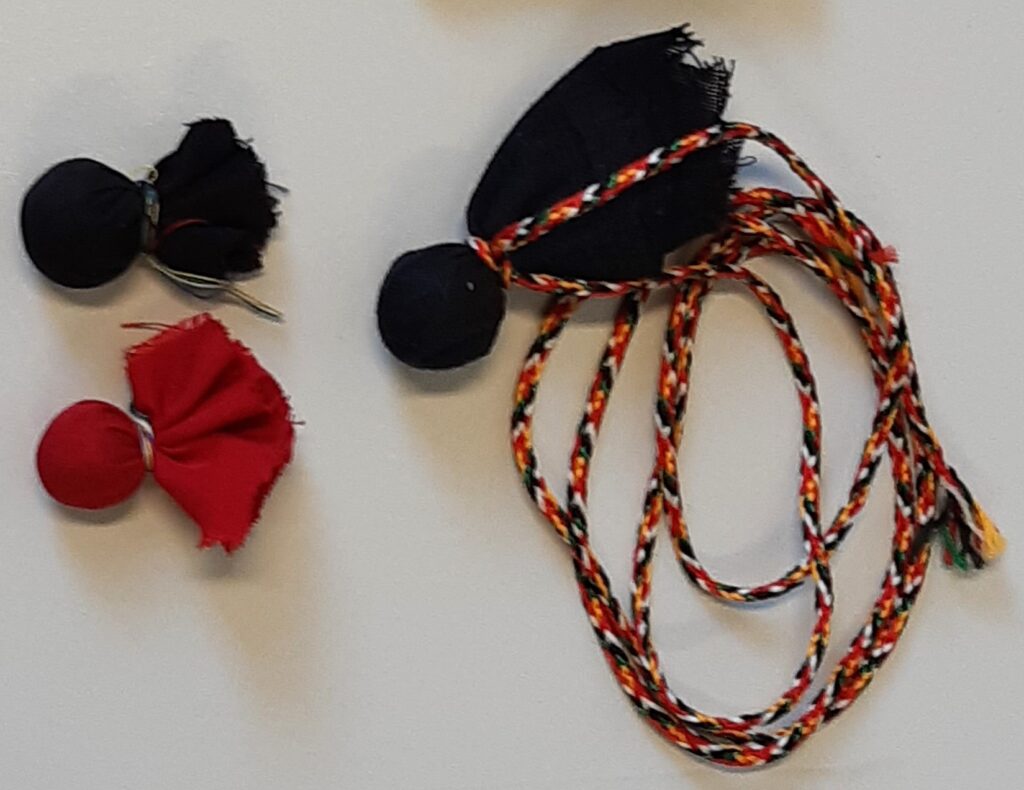
Amulets
As a student of the Tibetan medical physician and astrologer Epa Sonam Rinchen and having received initiations from Pelpung Tai Situ Rinpoché, Dr. Ngawang Damchoe (Kunde Medical Clinic) had the rare combined medico-ritual expertise to prepare two variants of Nakpo Gujor (include one wrapped in red cloth, for children), as well as a Logyönma amulet.
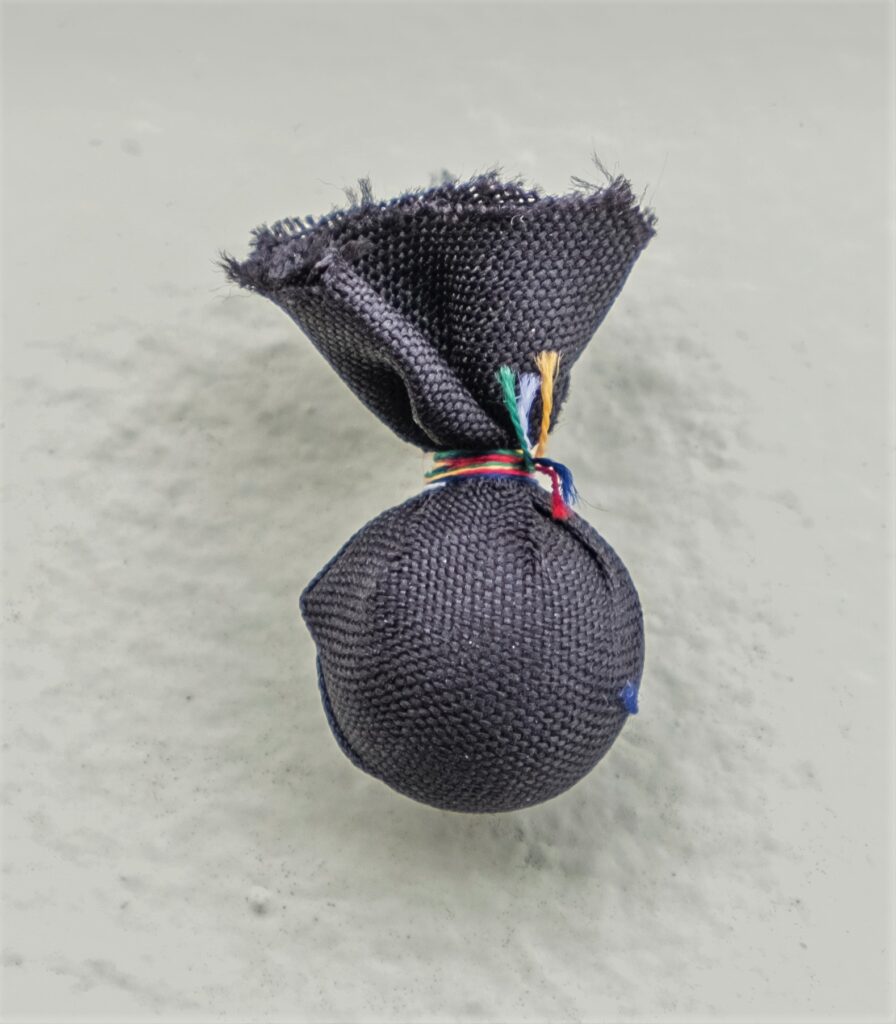
Parṇaśabarī, the Leaf-Clad Goddess (Tib. Lo gyon ma) is known for averting epidemic diseases. Her protection is embodied in astrological amulets as well as in 21-ingredient pills (Lo gyon ril bu).
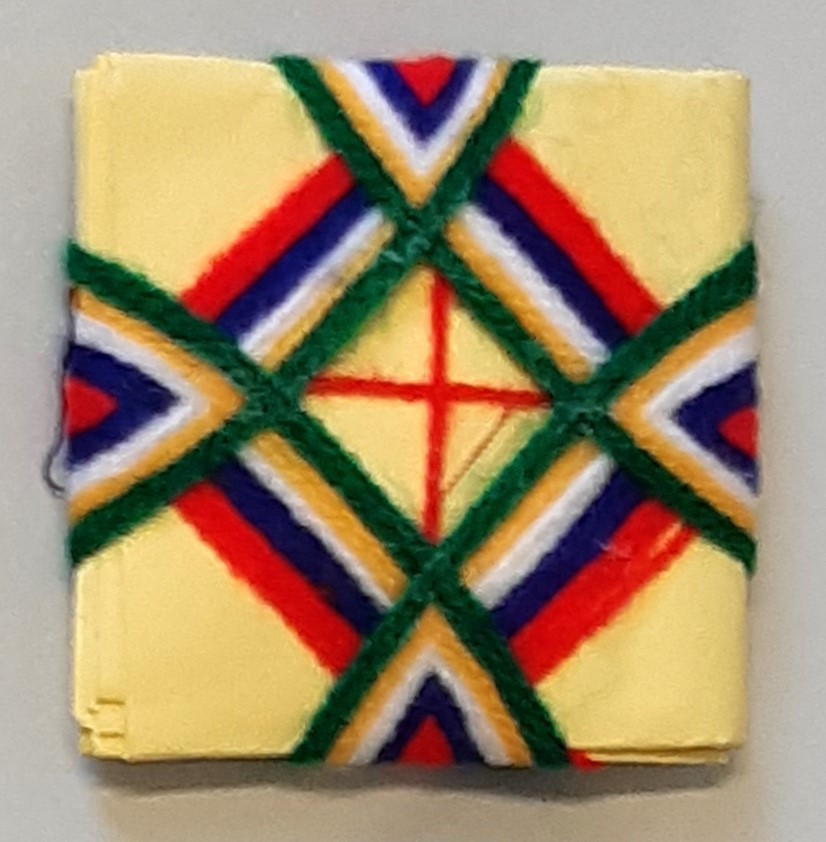
Incense
During the pandemic, Dr. Urgyen Bhuti (Kathmandu) also advised her patients to burn this incense made with high-altitude Himalayan herbs to purify the air.
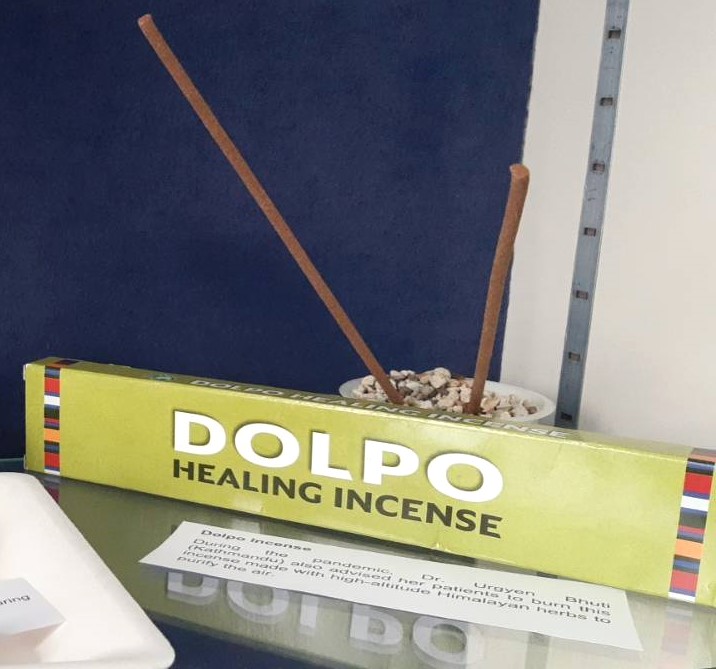
Biographies of Precious Pills expo
